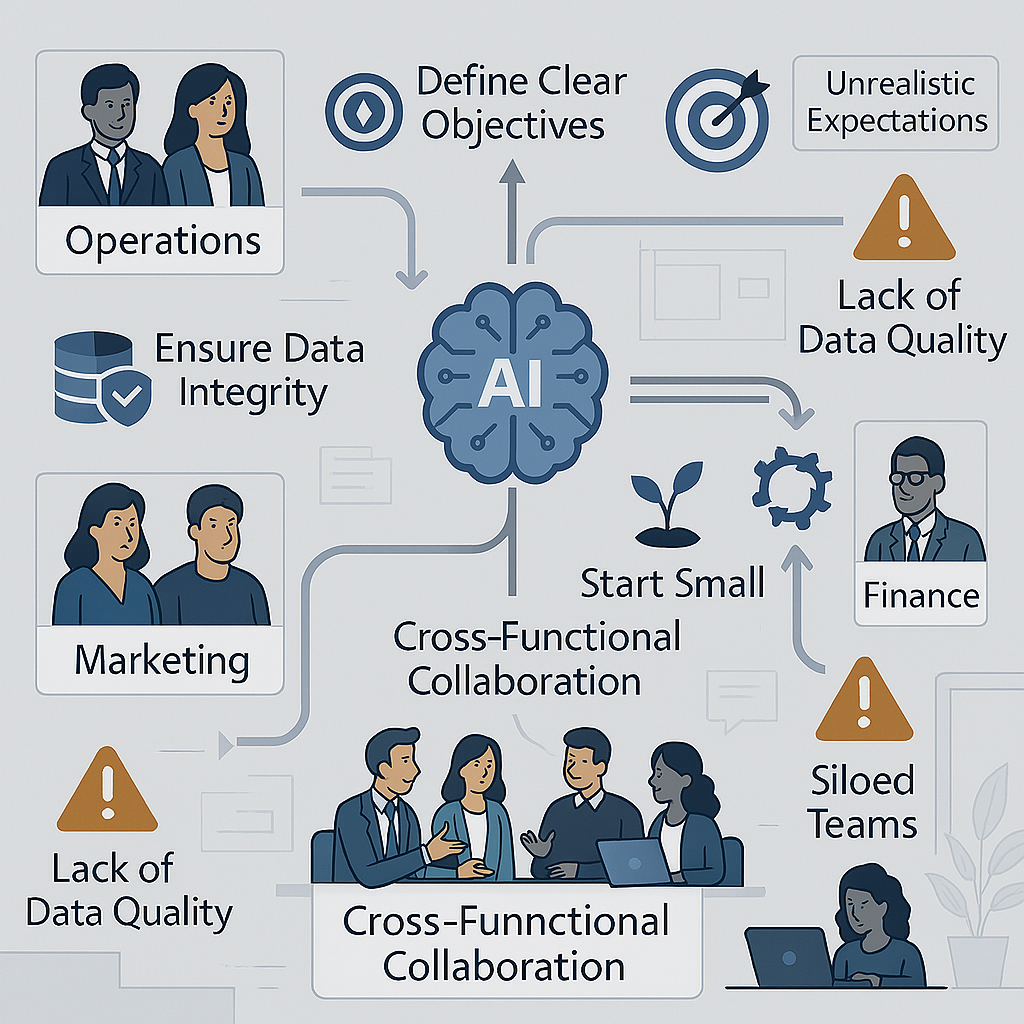Tips on Avoiding Common Pitfalls When IntegratingAI
As organizations increasingly turn to artificial intelligence (AI) to enhance operations, improve decision-making, and drive innovation, the integration of this powerful technology can present unique challenges. While the potential benefits of AI are vast, many companies fall prey to common pitfalls that can hinder successful implementation and lead to wasted resources. This article aims to provide valuable insights and practical tips on how to avoid these challenges when integrating AI into business processes. By understanding the basics of AI integration, setting clear objectives, ensuring data integrity, and fostering a culture of collaboration and continuous improvement, organizations can maximize the impact of AI and harness its transformative capabilities.
Understanding the Basics of AI Integration
Defining AI and Its Relevance
Types of AI Technologies
Identifying Common Pitfalls in AI Implementation
Lack of Clear Vision and Strategy
Overlooking Technical Limitations
Ignoring Stakeholder Input
Setting Clear Objectives and Goals
Aligning AI Projects with Business Goals
Measuring Success: KPIs and Metrics
Ensuring Data Quality and Integrity
The Importance of Clean Data
Data Privacy and Security Considerations
Building a Cross-Functional Team
Key Roles and Responsibilities
Fostering Collaboration Across Departments
Prioritizing User Training and Adoption
Creating Effective Training Programs
Feedback Mechanisms for Continuous Improvement
Establishing Continuous Monitoring and Improvement
Setting Up Monitoring Systems
Iterating Based on Performance Data
Navigating Ethical Considerations in AI Integration
Addressing Bias and Fairness
Transparency and Accountability in AI Systems
Summary:
Integrating artificial intelligence (AI) into business processes offers transformative benefits but also presents significant challenges. This guide outlines critical strategies to avoid common pitfalls in AI adoption, helping organizations maximize success.
Key recommendations include:
-
Understanding the fundamentals of AI and aligning it with relevant business contexts.
-
Avoiding strategic missteps such as unclear goals, underestimating technical limitations, and excluding stakeholder input.
-
Setting measurable objectives and ensuring projects align with broader business goals.
-
Maintaining high-quality, secure data, which is essential for effective AI outcomes.
-
Building cross-functional teams to ensure seamless collaboration across departments.
-
Training users and encouraging adoption through structured programs and feedback loops.
-
Implementing continuous monitoring and improvement, enabling AI systems to evolve with business needs.
-
Addressing ethical concerns, such as fairness, bias, and transparency in AI decision-making.
By following these best practices, organizations can confidently implement AI solutions that are impactful, responsible, and sustainable.


